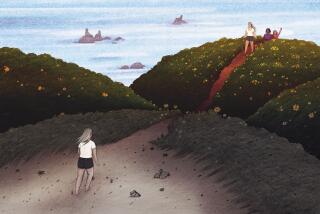Tanzania’s Hadza group sheds light on ancient social networks
Long before Facebook made it possible to share photos of your breakfast with hundreds of friends and let them know just how you feel about your latest parking ticket, humans were forming social networks with essentially the same structure people use today.
A team of researchers has mapped out the relationships among a remote group of 205 hunter-gatherers in Tanzania who live as humans did about 10,000 years ago and found that their social networks are very much like ours, even in the absence of the complicating factors of megacities, cellphones and the Internet.
The researchers found that individuals who are willing to cooperate prefer the company of other cooperative people and that free riders tend to stick to their own kind as well. The results appear in Thursday’s edition of the journal Nature.
“These networks of primitive cultures are not that different from the kinds of networks that exist in modern society,” said Stanley Wasserman, a statistician at Indiana University who was not involved in the study. “This is great stuff.”
The findings offer an answer to the much-debated question of why humans cooperate with one another.
Natural selection would dictate that free riders in a community — those selfish individuals who take advantage of other people’s generosity — would outcompete their more selfless brethren. Social networks may have been very useful in making sure that the cooperative individuals were able to work together successfully.
Recent work linking genetic variation to social network structure lent further credence to the idea that social networks may have evolved for purposes of survival. For instance, scientists have found that the social networks of identical twins are more similar than those of fraternal twins, suggesting that genes play a role.
“If these properties are written in our genes, is this something we would find in humans who lived like we would have lived thousands of years ago?” asked UC San Diego social scientist James Fowler, one of the study’s coauthors.
To test the theory, Harvard Medical School researcher Coren Apicella traveled to remote regions of Tanzania to study members of a tiny group of hunter-gatherers known as the Hadza. The Hadza live as ancient humans in the Pleistocene are thought to have lived: no agriculture, carrying few or no possessions, setting up camp to forage and hunt, and relocating every four to six weeks after stripping the bushes and baobab trees within walking distance.
“They provide a kind of window into the past,” said study senior author Dr. Nicholas Christakis, a physician and social scientist at Harvard University who studies how social networks affect health.
The Hadza travel in wandering bands spread out around Lake Eyasi. If individuals don’t like their current band, they can leave and join another one, setting up an interesting opportunity for the researchers to probe their social network.
First, Hadza in 17 different bands were shown what could be considered a primitive version of Facebook — a printout with head shots of all the Hadza in all bands — and asked to identify who they’d like to be with in the next band they joined. (Men were shown only men and women shown only women, so that romantic aspirations would not complicate the results.)
The Hadza were also given three sticks of honey, a prized possession, and asked to choose three people to whom they would give each honey stick. These two tests enabled the researchers to map out the Hadza’s social networks.
For the third exercise, the Hadza were given four honey sticks. They could keep all four, but they were told that each stick they contributed anonymously to a common pile would be tripled by the researchers and redistributed later. This game was a test to see which individuals were more cooperative and which were free riders, opting to secretly keep their sticks while also benefiting from the redistribution of sticks in the common pile.
When the researchers put this information together, they found that Hadza who contributed more to the common good were more likely to be friends with other cooperative people. These connections formed clusters that were often near the center of the social networks. That, in turn, made the group more successful and better able to compete with other groups for scarce resources, Christakis said.
The researchers were surprised to find that the free riders were more likely to be friends with other free riders, and they aren’t quite sure why that is. It could be that those who cooperate choose to be friends with people like themselves, leaving no space for free riders, or that the former influence those around them to become more cooperative. Another possibility is that free riders actively prefer the company of other free riders because they’re less likely to be sanctioned for their behavior, said Joseph Henrich, an evolutionary researcher at the University of British Columbia in Vancouver who was not involved in the study.







